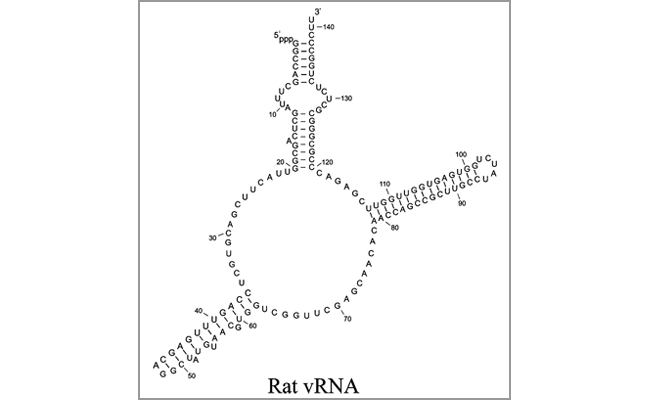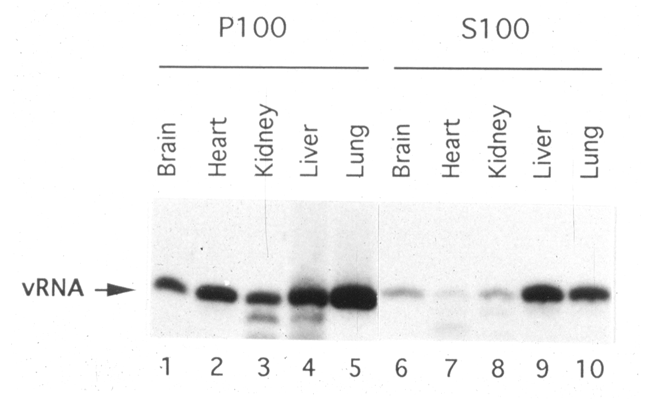Big Kids: Vault RNA

The vRNA constitutes 5% of the rat vault particle by mass and is present at 16 copies per particle. The majority of what is known about the vRNA was obtained under Dr. Valerie Kickhoefer's leadership (with excellent collaborators including Dr. Deborah Johnson at USC, and more recently Dr. Lea Harrington at University of Toronto and the Amgen Institute). The vRNA does not appear to have a structural role, as its digestion does not alter the particle structure. This suggests that its role is functional and its association with the vault particle is part of that function.
The sequences of the vRNAs from rat, mouse, bullfrog, and human have been determined and found to vary in length and number (see Table I). Despite the differences in length, the RNAs can be folded into similar secondary structures.
Above is the predicted secondary structure of the rat vRNA.
The conservation of the predicted secondary structures for RNAs isolated from different species supports the arguement that vRNA is an essential functional component of vaults. The rat and bullfrog vRNA primary sequences share 65% sequence identity. In addition, the rat vRNA gene has been cloned and determined to be a single copy gene. Although the human and mouse vRNA genes have been cloned, their copy number has yet to be determined.
Subcellular fractionation studies indicated that all of the MVP is assembled into vaults. In contrast, examination of the vRNA revealed that a significant portion is not associated with the vault particle suggesting that the vRNA/vault particle interaction is dynamic.
The figure below shows the vRNA distribution in various tissues of the rat. Notice the relative amount of vRNA varies between tissues (lung and liver are highest).
